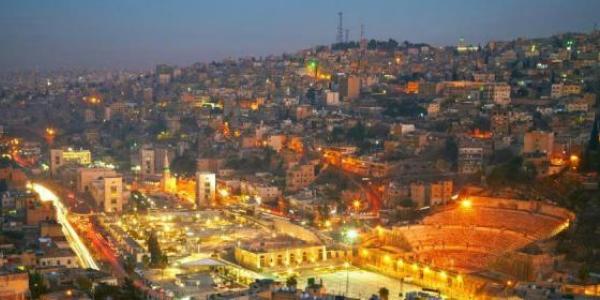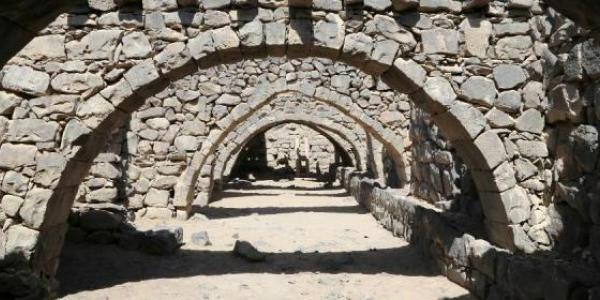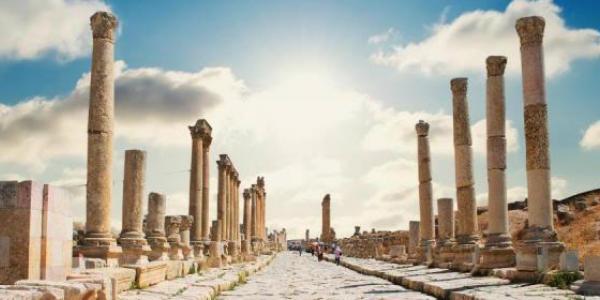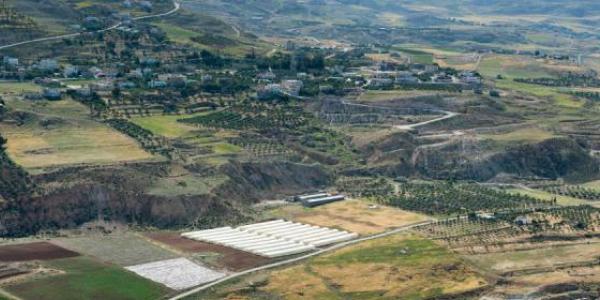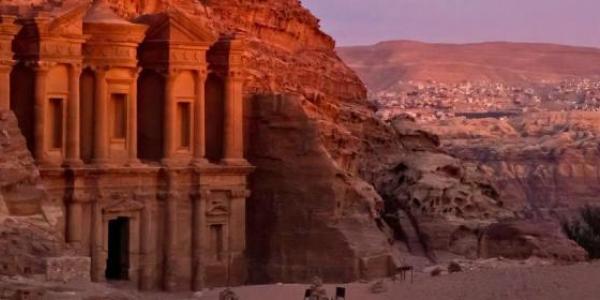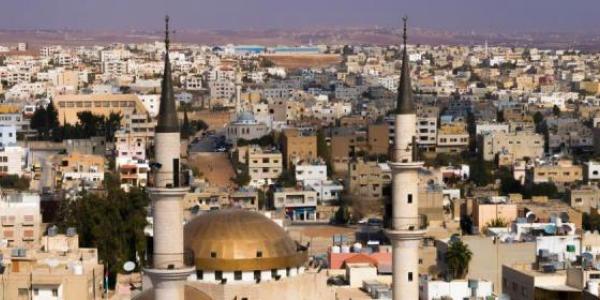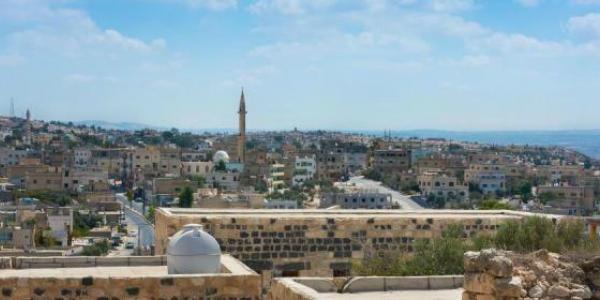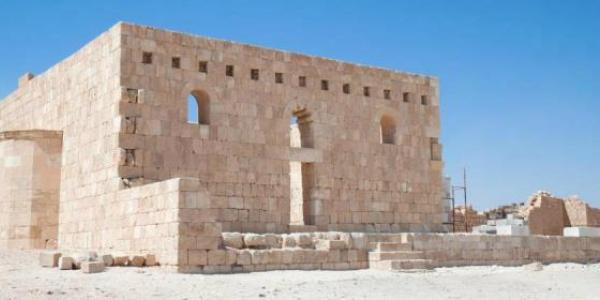Umm Qays (Gadara)
Umm Qays (known in biblical times as Gadara) was founded in the Hellenistic years of affluence and flourished in the Roman years of luxury. It is the most important archaeological site near Irbid (around 30 km). The Hellenistic-Roman city of Gadara was a semi-autonomous city of the Roman Decapolis, planned with a Roman city layout.
Gadara was known in its time as a centre for culture as it was the home of several classical poets and philosophers, including Theodorus, the founder of a rhetorical school in Rome.
The New Testament mentions that Jesus Christ had visited Gadara and cured two mad men near it by transferring the haunting evil souls into a herd of pigs. Gadara participated in the ecclesiastical council held in Nicaea in 325 AD, and a five aisled church was built during the same century on top of the Roman mausoleum. Later on, the classical city was occupied by late Ottoman structures, and then, the city’s Greek past faded away until archaeological excavations were carried out. The Ottoman village on the top of part of the ancient city was acquired by the Department of Antiquities who now has several excavation and conservation projects at the site.
The old city of Gadara is perched on a hilltop overlooking the Jordan Valley and the Sea of Galilee where visitors to the site can view the Syrian Golan Heights, Mount Hermon, Lake Tiberias and the north Palestinian plains. Its main sites are the stunning black basalt theatre, the basilica, and adjacent courtyard strewn with nicely carved black sarcophagi, the colonnaded main street, and a side street lined with shops, and underground mausoleum, two baths, a nymphaeum, a city gate, and the faint outline of what was a massive hippodrome. In addition to the wondrous Roman aqueduct, which forms an underground ‘qanat’, like a snake, of several kilometers of length.
The Umm Qays Archaeological Museum, which is located in one of the houses in the Ottoman village of Umm Qays, Beit al-Russan (House of al-Russan), is composed of two exhibition halls. In the first hall, various ceramic artefacts dating from the Hellenistic up to the Islamic periods are on display, along with finds from the tombs at Umm Qays. The second hall is dedicated to statuary, mostly from the Roman period.
Jesus cave
A cave known to the inhabitants of Umm Qays as the cave of Issa (Jesus or Issos) lies to about four kilometres west of Umm Qays. The citizens there believe - as their forefathers - that Jesus had stayed in this cave while travelling to Umm Qays, in order to release its ancient people from paganism.
Pella
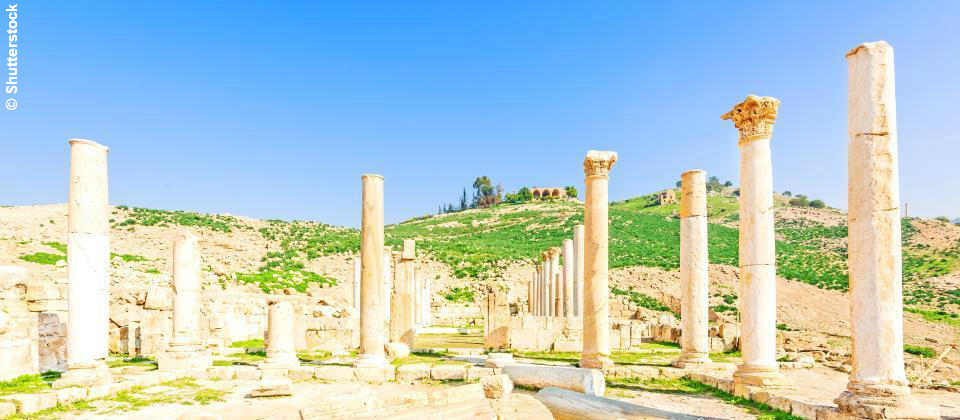
Pella (around 40 kilometers south-west Irbid) is one of the cities of the Decapolis were many interesting archaeological monuments are still under excavation. Important are the 6th century West Church, 6th century Civic Complex Church, 1st century Odeon (Theatre), Roman Nymphaeum and East Church. Pella (whose Arabic and current name is Tabaqat Fahl) is the site of a battle between Islamic troops and the Byzantines.
Adasiyyeh (or Adasiya)
It is a small village with hot springs at 10 km to the north west of Um Qays, and a small hotel with a swimming pool fed from the springs. It offers food and bedrooms for those who wish to spend some relaxing times, enjoying the mineral waters. The hot were once highly regarded by the Romans.
Close to Adasiyyeh the site of the Yarmouk battle is found. In August 635 AD, in the face of the Muslim expansion, the Byzantine Emperor Heraclius gathered a large army, led by his brother Theodorus, and fought the Muslim army at the Battle of Yarmouk. This site lies on the banks of the Yarmouk River on the Northern tip of Jordan. The Muslim army was greatly outnumbered but their commander Khalid ibn al-Walid led them to victory. This battle gave the Muslims control of Greater Syria. The battle was determined when Christian Arabs defected to the Muslim camp thus changing the course of History.
Al-Mazar al-Shamali
Al-Mazar al-Shamali, around 20 kilometers south west of Irbid, has a shrine to Prophet David. As a child, he slew Goliath with a sling and later became the second King of Israel after Sha'ul (Saul). Moreover, David was one of the apostles to whom heavenly scriptures were revealed. David spent time in Jordan whilst at odds with Saul, as well as later while on a campaign.
The tomb of the venerable companion Abu l-Darda
The tomb of the venerable companion Abu l-Darda is located in a modern building in the village of Soam al-Shunnaq, 10 km north west of Irbid. One of the most devoted and pious of the companions, he was always by the Prophet’s side. Abu l-Darda was best known for surpassing everyone else in memorizing, narrating and transmitting Prophet Mohammad’s sayings. He took part in the military campaigns and was later appointed governor of the Bahrain province.



